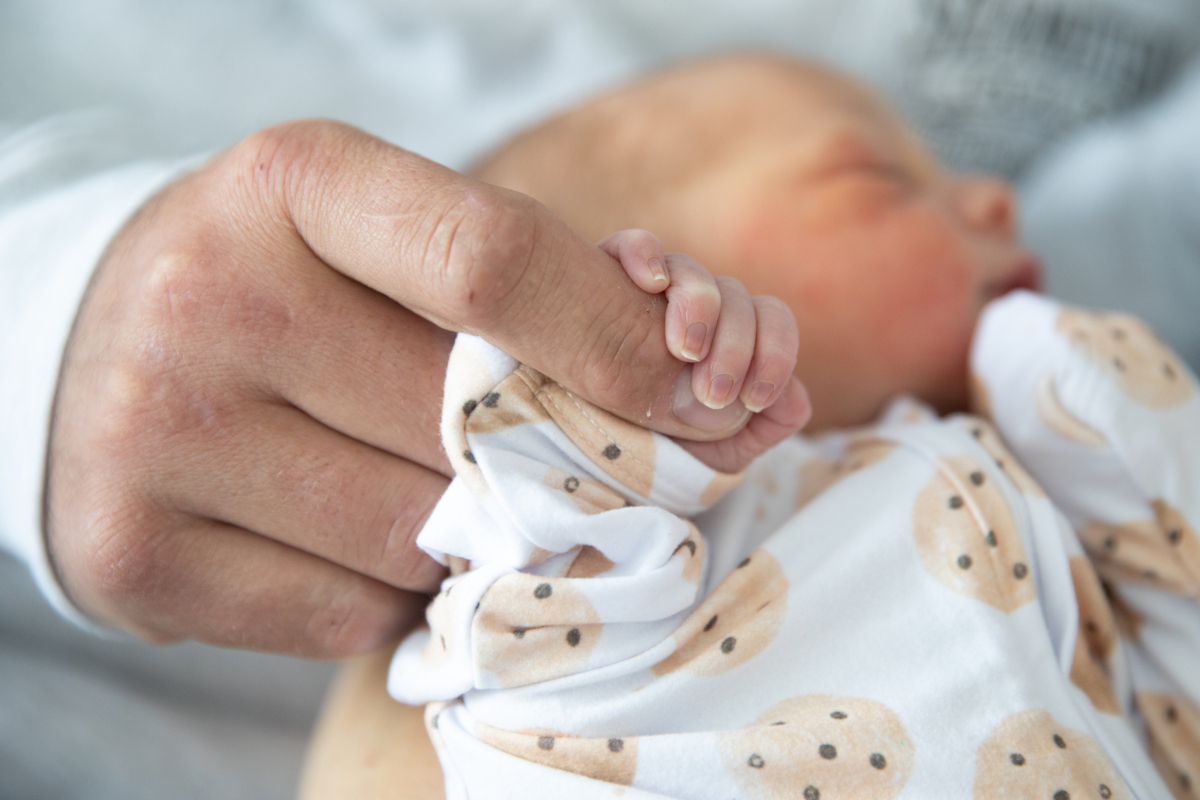The Medical Minute: Myths, realities of birth defects

For some families, the nine months of waiting before welcoming a new baby is a joyous time of bonding and anticipating.
For others, not so much. Pregnancy can be worry after worry. Often it comes with a laundry list of rules and advice ― some of it attached to consequences so dire they’re hard to face.
Dr. John Dougherty offers a thought that might cool temperatures for expectant moms. Dougherty is vice chair of quality in the Department of Obstetrics and Gynecology at Penn State Health Milton S. Hershey Medical Center, and he reminds parents-to-be that while the stakes may be high, there’s good news about birth defects.
“In general, as long as you keep yourself healthy and follow the guidelines your obstetrician has set for you, you’re going to be just fine,” he said.
That doesn’t mean you should take birth defects lightly. One in every 33 babies in the U.S. is born with a defect, according to the U.S. Centers for Disease Control and Prevention (CDC). Not all are preventable, and some you might not see the moment a child is born. For example, unless it’s caught before birth in a pre-pregnancy genetic screening, Turner Syndrome, which occurs when one of the X chromosomes that determine the biological gender of a child is partially developed or missing, might not make itself known until the child becomes a teenager.
Plenty of good-intentioned misinformation and half-baked truths about birth defects are everywhere. “Beware of Dr. Google,” Dougherty said. “If you have a question, reach out.”
Below, Dougherty gives the truth about some of the myths regarding birth defects.
Myth: Birth defects are only caused by heredity.
Truth: “There’s no truth to that at all,” he said.
While having someone in your family with a birth defect is a risk factor – and Dougherty recommends families in the planning stages speak with a genetic counselor to rule out any possibilities of birth defects – other external factors can come into play.
The CDC lists:
- Smoking, drinking alcohol or taking certain drugs during pregnancy.
- Having certain medical conditions, such as being obese or having uncontrolled diabetes before and during pregnancy.
- Taking certain medications, such as isotretinoin (a drug used to treat severe acne).
- Having certain infections during pregnancy such as Zika virus and cytomegalovirus.
- Experiencing fever greater than 101 degrees or having an elevated body temperature due to heat exposure.
- Being an older mother, as the risk of chromosomal abnormalities increases with age.
At this point, more research must be done about COVID-19’s effects on pregnancies, Dougherty said. The illness is still too new.
Myth: Spicy foods can lead to birth defects.
Truth: Don’t put away the Tabasco just yet. A spicy dish in and of itself isn’t going to cause problems, Dougherty said.
However, don’t take your diet lightly. Some foods are infected with bacteria, for example, that can affect the health of the fetus. Dougherty recommends talking with an obstetrician about what foods to avoid.
Myth: I need to give up chocolate.
Truth: No, chocolate is OK. That said, you need to watch your sugar intake, Dougherty said. Around 8% to 12% of all diabetic pregnancies have been associated with malformations, according to the National Institutes of Health. In particular, diabetes can lead to heart problems for a child.
Myth: Hot baths. Out.
Truth: Filling up the tub in your bathroom with hot water that you soak in is “generally fine,” Dougherty said. While it’s true that external forces can push the body temperature to extremely high temperatures – which can, in rare cases, be unsafe for a fetus — a warm bath isn’t going to approach 98.6 degrees without scalding the bather. That’s the average body temperature of a healthy human being.
When it comes to jacuzzi baths or saunas that ratchet up the temperature a little higher, however, “the jury is still out,” Dougherty said.
Myth: Forget about dying your hair until after the baby arrives.
Truth: “There’s concern about chemical exposure in general,” Dougherty said. “Some hair dyes do have chemicals that can seep into your skin.” While most hair treatments are considered safe, the American Pregnancy Association recommends pure vegetable dyes and waiting until later in the pregnancy. Or, better still, waiting until after the baby arrives.
Myth: It’s safe to smoke a little or have a glass of wine while I’m pregnant, as long as I don’t have too much.
Truth: “Attitudes about this have shifted,” Dougherty said. Thirty years ago or so, doctors preached moderation. Today, the pendulum has swung to abstinence, considering what’s at stake.”
Fetal alcohol spectrum disorders are a group of conditions that can occur in someone who was exposed to alcohol before birth. They can cause a myriad of physical and behavioral problems from learning disabilities and low IQ to low body weight and heart, kidney and bone problems. Smoking can also cause low birth-weight babies and cleft lip and pallet.
Related content:
- The Medical Minute: Pediatric congenital heart disease patients need help transitioning to adulthood
- The Medical Minute: Healthy babies start with healthy moms
The Medical Minute is a weekly health news feature produced by Penn State Health. Articles feature the expertise of faculty, physicians and staff, and are designed to offer timely, relevant health information of interest to a broad audience.
If you're having trouble accessing this content, or would like it in another format, please email Penn State Health Marketing & Communications.
